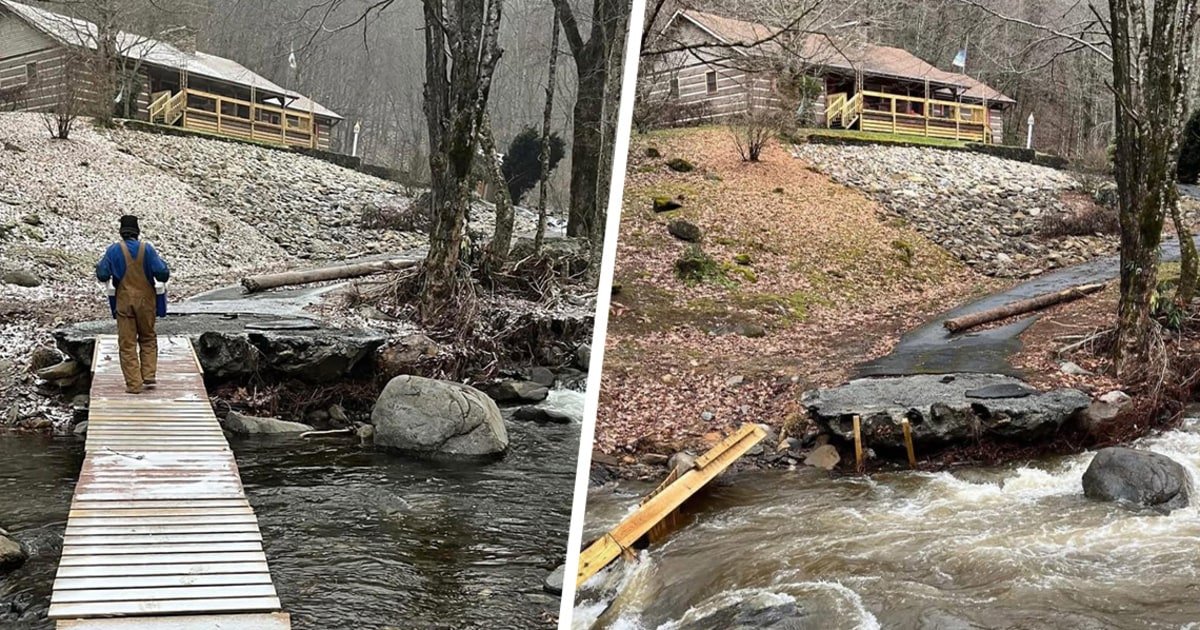County officials said that with the loss of the bridges, first responders would not be able to reach more than 20 residents. because the bridges that once carried vehicles over the rivers were washed away by the hurricane and have not been rebuilt.
“There are several people we can’t access on an emergency basis,” Barrier said.
The storm is the latest setback for mountainous Avery County, population 18,000.
More than 400 residents were displaced and about 120 homes were destroyed or severely damaged by Hurricane Helene, county officials estimate.
The construction of temporary housing, the removal of huge amounts of debris and the restoration of river banks have been slow, Barrier said, adding that many displaced residents are staying in hotels, with relatives or in caravans on their properties.
“It’s been very slow,” Barrier said of the recovery efforts. “It’s been normal in some areas, but it’s far from normal in other places.”
Robin Ollis, founder of Bridges for Avery, the organization that built the now-razed structures, said she feared families with children and the elderly would be stranded.
Since the violent hurricane devastated the hills and hills of Avery County, residents have been struggling to come to terms with what happened in their hometowns, he said.
“There has been sadness and confusion about the recovery efforts,” Ollis said.
Helene killed at least 223 people across the Southeast, about half of them in North Carolina, authorities said.
It displaced tens of thousands of people in western North Carolina, where the federal government has already spent $500 million on cleanup efforts.
In some places, entire blocks where homes once stood have been leveled and waterlogged vehicles rot in the weak winter sun.
Buncombe County is expected to lose nearly $600 million in revenue this winter on travel, lodging and related expenses.
More than 100 small businesses in Asheville, North Carolina, have already closed due to infrastructure damage or decreased revenue, or both.









